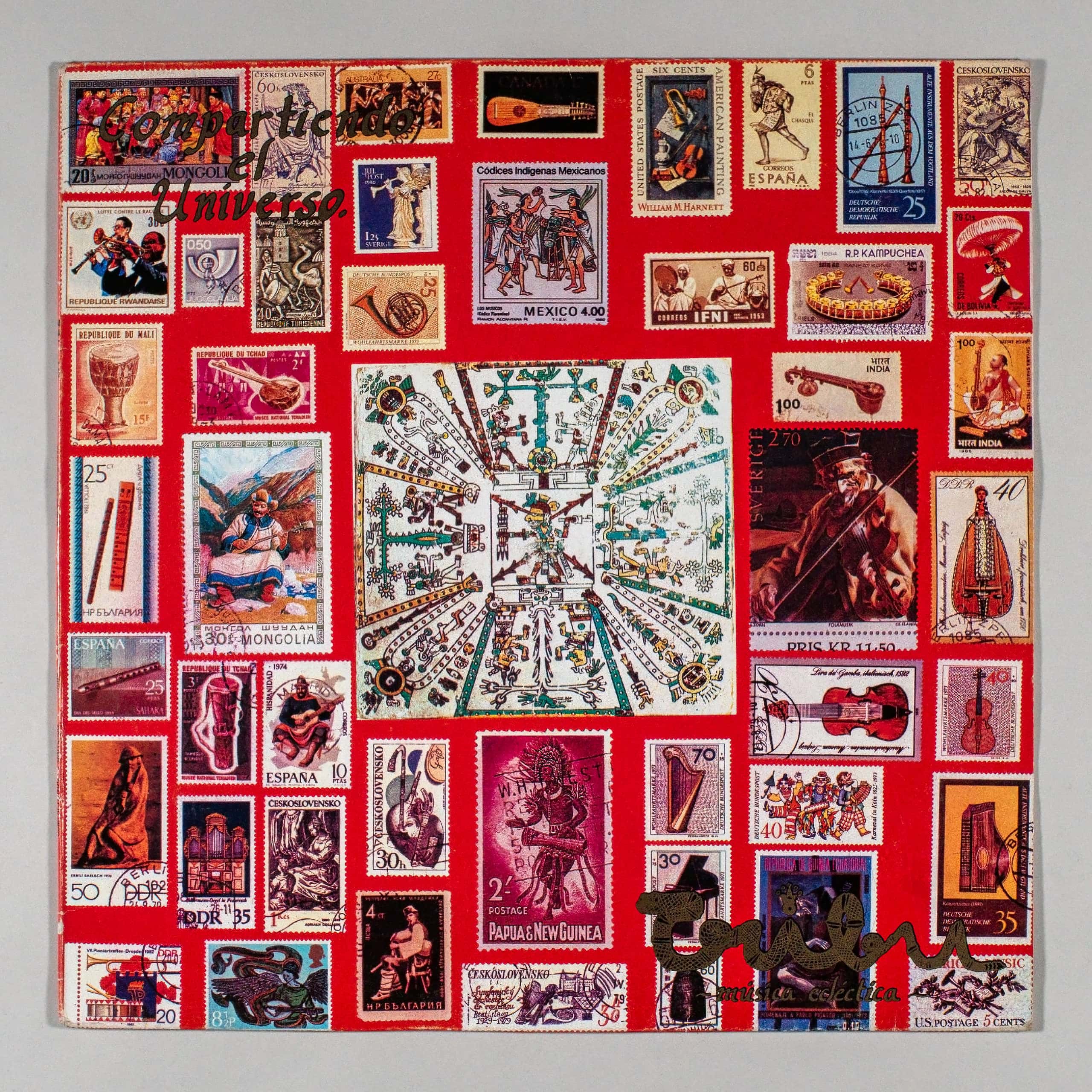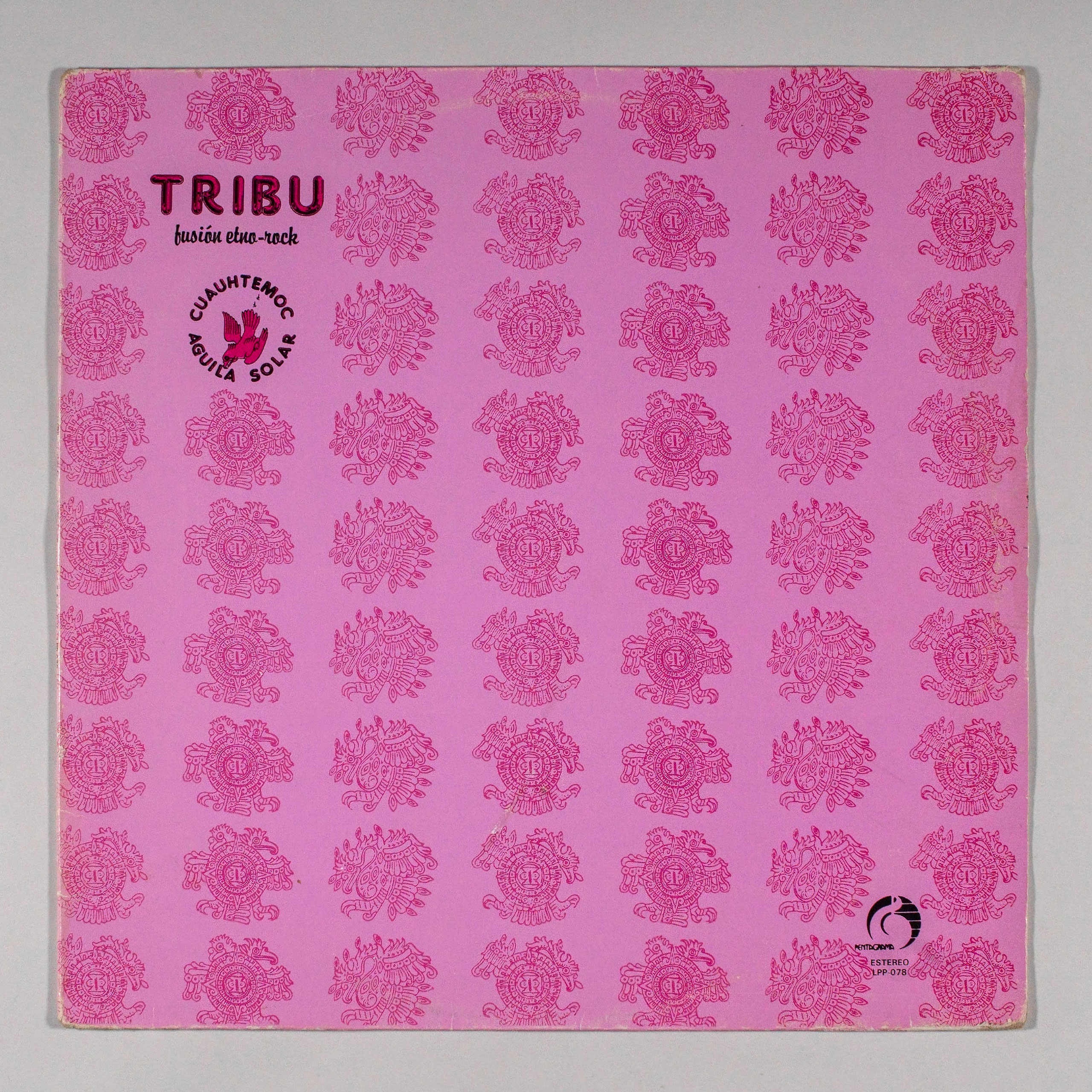MASS TO S.S. JOHN XXIII BY JULIAN CARRILLO
Julian Carrillo
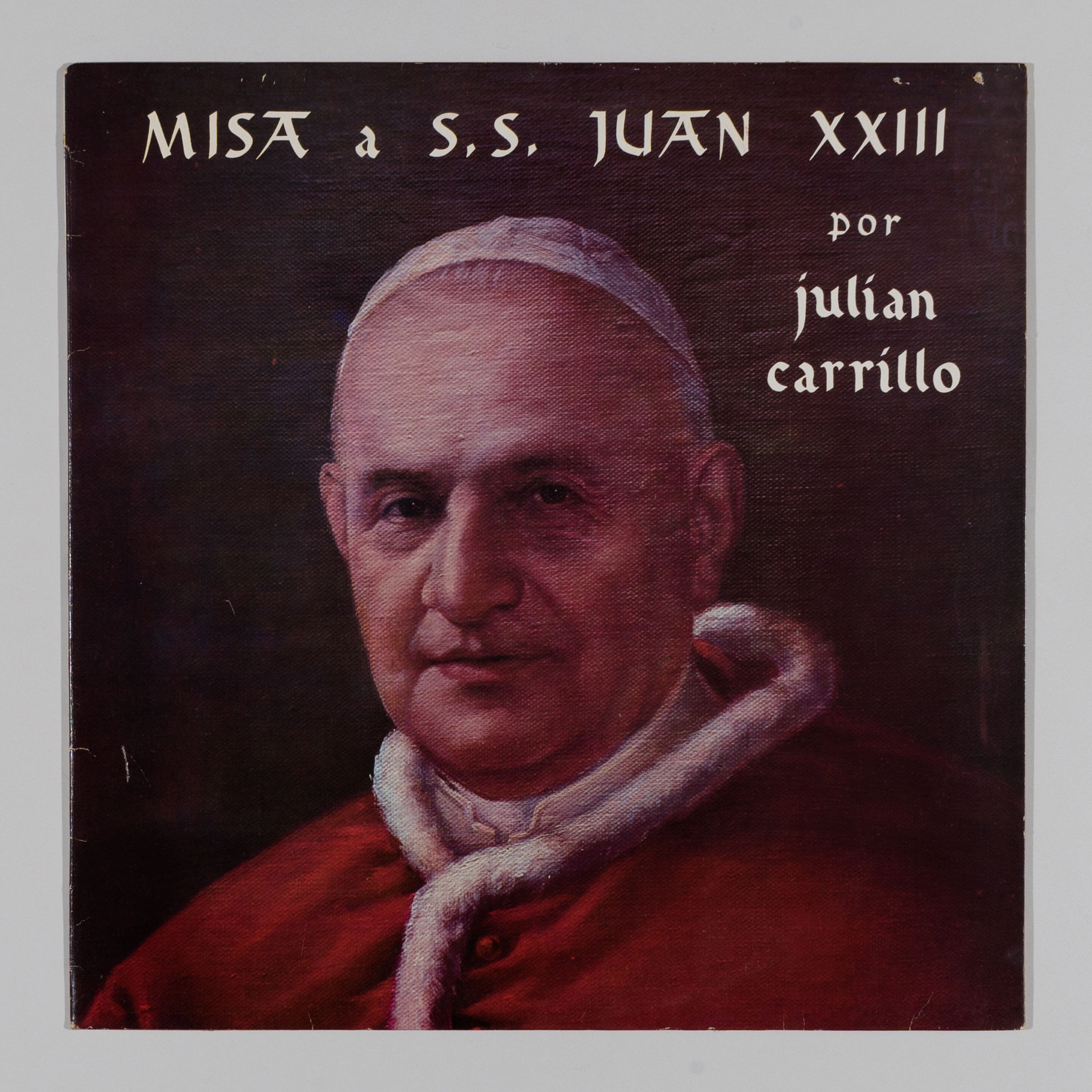
|
Label: Sonido 13 JC003 |
Country: Mexico Genre: Microtonal |
Info:
MASS to S.S. JUAN XXIII by Julian Carrillo
MALE VOICES “A CAPELLA”
“CHORALE -DES- PROFESSEURS DE MUSIQUE DE LA VILLE DE PARIS”
UNDER THE DIRECTION OF ROBERT BLOT
DIRECTOR OF THE CHOIRS OF THE PARIS OPERA
I was in Paris when, through the radio, the election of a new Pontiff was announced and that he would take the name of John XXIII.
From the beginning of his reign, in which he stood out with extraordinary profiles, I saw with amazement that his ideals coincided point by point with the motto of my Sound 13 revolution, which I published since 1924 and which is: “Enrich, Purify and Simplify Music”.
In the case of his Holiness, his enrichment was manifested by the desire to attract all other religious creeds to Catholicism; purification, by going to the very sources of Christ’s teachings, with which would come doctrinal simplification.
It was for this reason that I felt moved to pay homage to such an illustrious Pontiff and wrote a quarter-tone Mass, which is the first and only one of its kind, and dedicated it to him.
On the cover I wrote the following words: “Musically new Mass”. “Am I right in calling this composition a musically new Mass?” Here are the reasons for my belief; first, that I did not use in it, in its melodic part, any of the two scales in use: the major or the minor; second, that harmonically I didn’t use the classic chords either, major, minor and diminished; and consequently, I discarded the perfect cadences and hit them. The musical base of this Mass is one of the thirteen thousand three hundred scales conquered by my revolution of Sound 13, from which new melodies, new harmonies and a new emotional world result. I added to that scale the quarter tones, which are of a much greater emotional force than the semitones, which will produce in Christianity a spiritual elevation that has never occurred before. I hope that this Mass is a worthy link in the chain of great events that history records in the field of religious music. These events were initiated by two Popes: Saint Ambrose and Saint Gregory, one in the fourth century and the other in the sixth century, who carried out a great musical revolution by formulating different scales with the seven sounds that had existed for six centuries before Jesus Christ. In the 11th century, the monk Guido gave names to musical notes, and in the 16th century Palestrina reflected in his Mass of Pope Marcellus a musical magnificence that we all admire.
“The progresses mentioned have all been to raise the spirit of believers towards the author of the story. . . May this new Mass, which I dedicate to the head of the Church, His Holiness John XXIII, open a new path to give thanks to God, from whom we receive the wonderful gift of hearing, through which our being is enraptured with the mystery of the sounds!” Mexico, January 1962.
I have deeply regretted not having had the honor or the satisfaction of premiering it in his presence, as was my wish; but his death does not in any way change my homage to the Pope for his wonderful performance in promoting the rapprochement of all mankind.
In my youth, in San Luis Potosí, I was in very direct contact with religious music and that is why I realized that often the singers who perform in the temples do not carry out their mission with the spirit that the liturgical texts require; and in dedicating this Mass to His Holiness John XXIII, I had the desire that it be performed by a choir of monks; purpose that I hope to achieve by recording it in Europe, where I will leave in this month of August. My representative in the city of Lux is already in talks with the extraordinary choir of the Russian Church in Paris, which, he tells me, has admirable voices, especially in the basses.
I have not decided, however, because a high-ranking person in the Catholic Church has suggested a wonderful Benedictine choir in Rome, which absolutely fulfills my wishes, and also suggests the choir of the Vatican itself.
Any of these three vocal ensembles will serve my purpose wonderfully.
The idea that those who sang it were religious, was born in me when I heard, in a First Communion ceremony, a choir of nuns who captivated me with the charm of their voices devoid of passion, and by the elevation and spirituality that they put into each of the words of the sacred texts.
Returning to the words that accompany the dedication of this Mass in quarter tones, in relation to the great musical events that have developed through the musicians of the Church, I think it is appropriate to say how regrettable it is, from the aesthetic point of view , that the mistake of accompanying Gregorian and Ambrosian songs with chords has been made and continues to be made, which is anachronistic, since the first chord was a 13th-century conquest and Pope Saint Ambrose existed in the 4th century , that is, nine centuries before, and Saint Gregory seven.
Furthermore, when Gregorian and Ambrosian melodies were harmonized with thirteenth-century chords, they lost, emotionally, all the richness that is in them due to the variety that results from the different placement of semitones; and when sung without any chord they have an enormous force that captivates.
Another mistake made by the musicians of the Church was to introduce the B flat in the first of the Ambrosian modes, since this accident was a product of the 11th century and, furthermore, with this it was only possible to duplicate the second mode, which is formed on the note A, and to which was placed, in the fifteenth century, a sharp to the seventh degree Sol, at which time the current minor mode was born, and with it the augmented chord.
I will not expand further on technical considerations; I only wish that this Mass written by me – which I plan to record in a few weeks in Europe – is a worthy link in the one that Palestrina delivered to Pope Marcellus in the 16th century and that still causes us admiration today, and that she be the tribute that I reverently dedicate to the memory of that great Pontiff, who in his very short reign knew how to capture the sympathy not only of Catholics, but even of atheists and those belonging to other religions, as demonstrated by the expressions of sorrow that were expressed when he died , for his marvelous ideal of uniting all men in the love of Christ; and also be my vote of gratitude to his Holiness John XXIII for having been the one who appointed the first Mexican cardinal.
Julian Carrillo (January, 1962).
STEREOPHONE SOUND
JC-003
THE RECORDINGS WERE MADE BY PHILIPS
IN PARIS – FRANCE.
RIGHTS GUARANTEED INTERNATIONALLY,
ITS TOTAL OR PARTIAL REPRODUCTION PROHIBITED.
Tracklist:
MASS TO S.S. JOHN XXIII IN QUARTER TONE
SIDE 1
MASS TO S.S. JOHN XXIII IN QUARTER TONE
- A1 MALE VOICES “A CAPELLA”
CHORALE -DES- PREFESSEURS DE MUSIQUE DE LA VILLE DE PARIS ?
Direction: ROBERT BLOT
SIDE 2
MASS TO S.S. JOHN XXIII IN QUARTER TONE
- B2 MALE VOICES “A CAPELLA”
CHORALE -DES- PREFESSEURS DE MUSIQUE DE LA VILLE DE PARIS ?
Direction: ROBERT BLOT
Credits:
“CHORALE -DES- PROFESSEURS” DE MUSIQUE DE LA VILLE DE PARIS” UNDER THE DIRECTION OF ROBERT BLOT, DIRECTOR OF THE PARIS OPERA CHOIRS.
Notes:
THIS DISC IS NOT IN THE MUSIC WORKS BOX.
Links:
Sold For:
Highest Price:
$1910 MXMedium Price:
$1030 MXCondition:
Media Condition:
Mint (M)Sleeve Condition:
Mint (M)Other Versions:
JULIAN CARRILLO – MASS FOR POPE JOHN XXIII
COMPOSERS RECORDINGS INC. (CRI) – CRI SD 246
1969







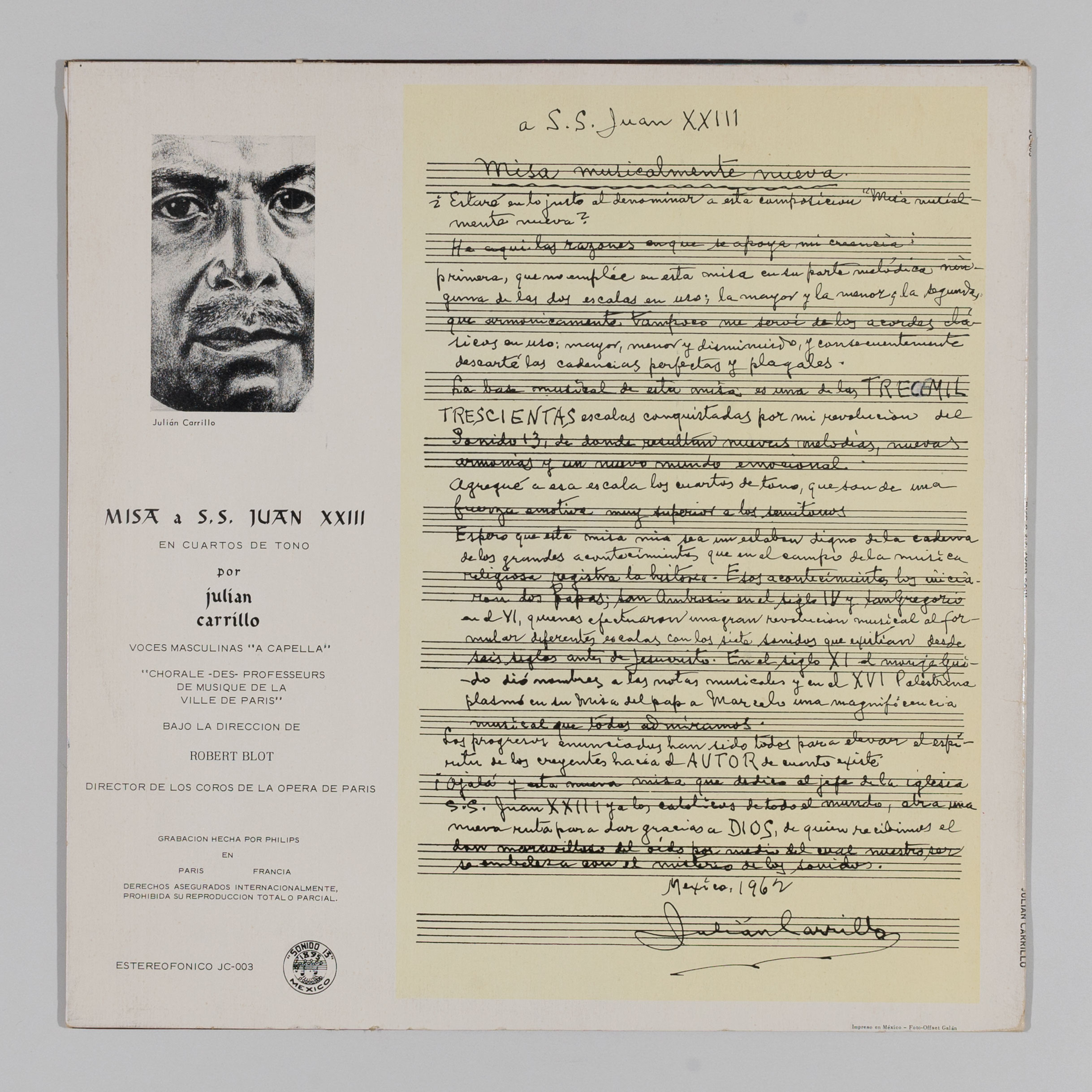
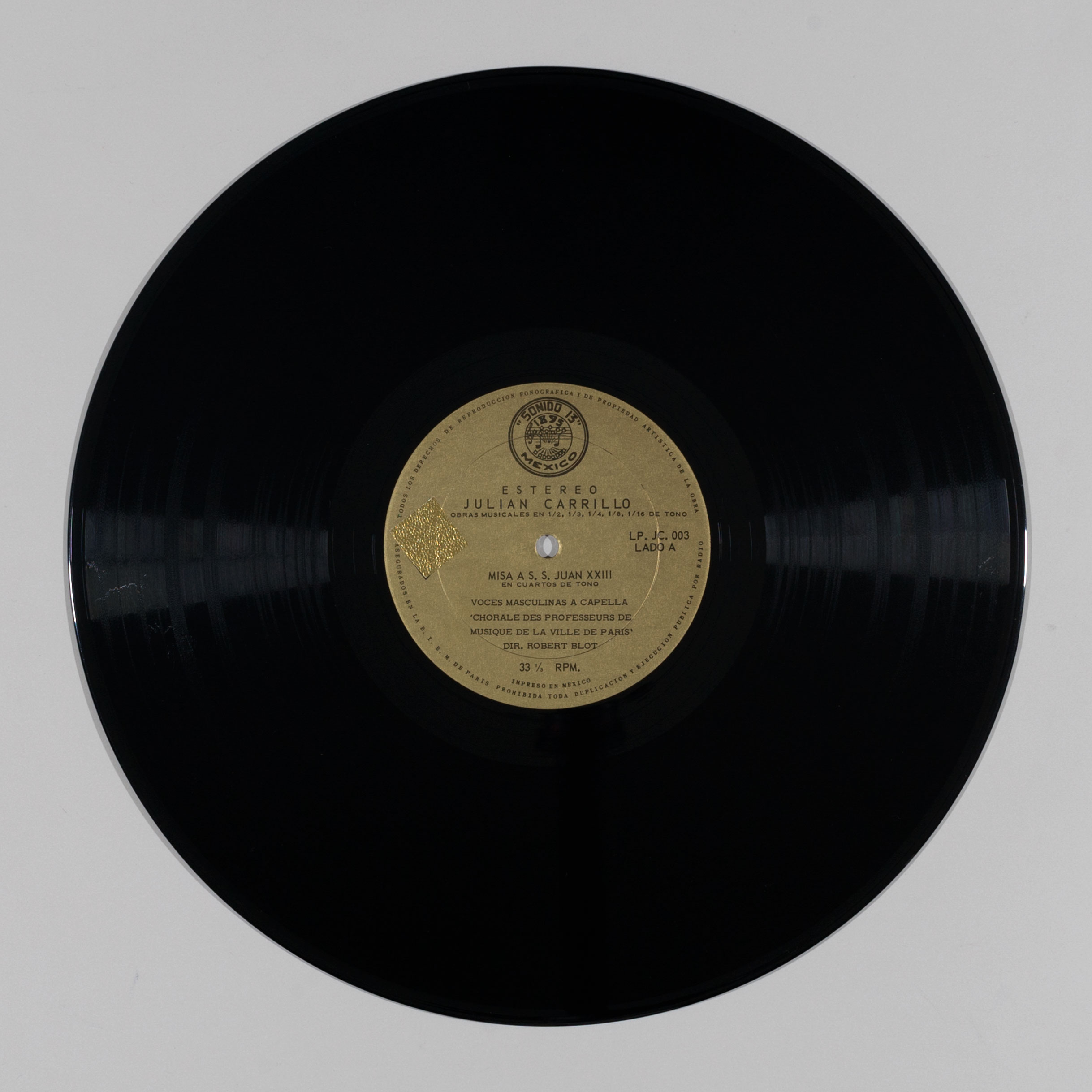

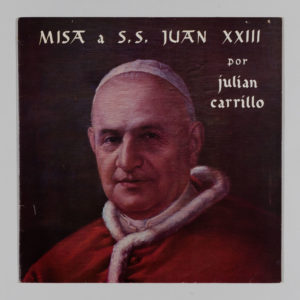
 JULIAN CARRILLO MISA PRIVATE MEXICAN LP SONIDO 13-CLASSICAL-MICROTONAL-RARE
JULIAN CARRILLO MISA PRIVATE MEXICAN LP SONIDO 13-CLASSICAL-MICROTONAL-RARE
